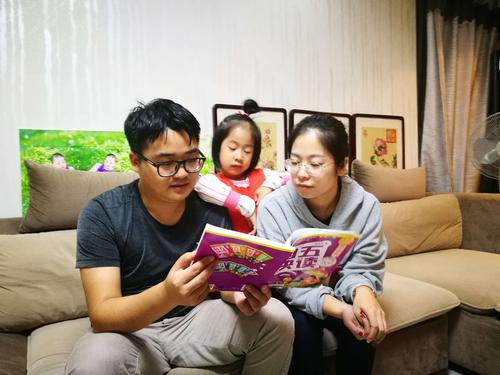克减的英文译语怎么说-福尔摩斯 演绎法
2023年4月4日发(作者:cet etest net cn)
本文是高中英语教师教师资格证考核是说课需
要使用的稿子,全部在这里了。每年都是这几个
题目,大家好好分享吧,祝你们每个人考过!
ok1AUnit4Reading“TheRescue”P24
2.SEFCBook1AUnit12SpeakingP79
3.SEFCBook1BUnit21ListeningP57
4.SEFCBook1BUnit20GrammarP54
5.SEFCBook1BUnit16P27
6.SEFCBook2AUnit4Reading:“EnglishPoetry”
7.SEFCBook2AUnit9Integratingskills
“VoicesoftheEarchSummit”P71
8.SEFCBook2BUnit20GrammarP78
Unit4Reading\"TheRescue\"
Reading
TheRescue
he
sosurpris
edthatshecouldn’r,beforeshecouldth
inktwicethewaterwasuponher.
“Run”gherarm.
Thenextmoment,thefirstwavesweptherdown,
hingwentsofastshecouldn’
retheyreachedthehouse,ngdowntreesandsw
thwentdownunderwater.
tanding,holdingontoatreethatgrewagai
’sheadwasabovethewater,butshecouldn’
shandwasholdingh
,thewater,wh
dF
loralookedintoeachother’sfacewithalookoffright.
“Gettothesteps”Jeffshouted.
Itwasonlyjustaroundthecorner,kedathimbutshe
ewaterseemedtogodownalittle,
uic
!Anotherwavestruckthehouseandthestra
anupthestairs.
Thereshestopped,listeningtothestrangesounds,whilethewholehousemoved.
Flora,whosebeautifulhairanddresswereallcoldandwet,startedcrying.
“Thehouseisfallingdown”shoutedJeff“whereisthechimney,whichroom
thechimneywillstand?”
,thewatersweptpastthehouselike
tertreewentdown,cutdownbythewaterwhichmusthave
beenthreemeter’denthatwasoncesobeautifulwascompletely
destroyed,sweptawaybythewildwater.
fthehousehadgonedown
emomentsbothwer
esilent.
“imney!!
Allright!Allright!”
SEFCBook1AUnit4Reading“TheRescue”
Aims:
studentsunderstandthewholepassagefully.
omeknowledgeabouthowtorescuethemselvesifnatural
disastershappened.
Aids:multi-media
Step1:Pre-reading(lead―in)
outunforgettableexperiences.
Listsomenaturaldisasters
Naturaldisasters:fire;flood;draught;earthquake;typhoon;tornad
o….
k:
isasterisit?
nyouseeinthevideo?
water;waves;manypeoplearesweptdownbythewaves,strugglin
ginthewater;.
Theyaretyingtorescuethemselves.
ereinaflood,whatshouldyoudo?
Thestudentscangivedifferentanswers.
anttoknowmoreinformationabouthowtorescueyour
selfinaflood?
Todaywewilllearnanewlesson”Therescue”
Openyourbooks,andturntoP24.
Step2:While-reading
Fast-reading
astanddotheexercises“trueorfalse”
efloodcame,Florawasinthehouse.F
hesecondwavecame,Jeffheldontoatreewhichgrewagainst
thewall.T
’sbeautifulhairanddresswereallwetandcold,butshestillfelt
veryhappy.F
nd,theydidn’tfindthechimney.F
ainanddividethepassageintothreeparts.
Part1(prar1toprar2)inthegarden
Part2(prar3toprar6)onthewaytothehouse
Part3(prar7toprar11)insidethehouse
Carefulreading
Readthepassagecarefullyandfindoutwhattheydidineachpart.
Partonelookaround;run;wave;hear;see;shout;seize
Parttwodrag;sweep;pullup;holdonto;struggle;fightfor;
Lookinto;run;gettothesteps;openthedoor
Partthreeclimb;runup;stop;listento;startcrying;lookoutof;shout;
rescue;
-reading
Task1:terwillinterviewyouabout
howyourescuedyourselffromtheflood.
First:saw;running;waving;lookedaround;sawawallofwater….
Next:swept…down;struggled…for
Then:triedtogettothehouse;climbedthestairs…
End:chimney;rescued…
Task2:Discussion:
Whatshouldyoudoifafirehappenedintheclassroom?
Showsomeusefulwordsandexpressionstohelpthestudents.
Afterdiscussing,.showthemsomepicturestosummarizewhatshould
bedoneifafirebrokeout.
rk
Writeanarticleaboutoneofyourunforgettableexperiences.
SEFCBook2AUnit4Reading:“EnglishPoetry”
一、TeachingGoals:
goals:
(1)Tolearnaboutpoetsandpoemsofdifferentcountries.
(2)Toimprovethestudent\'sreadingability.
(3)Toteacherthepastparticiple:usedasAdverbial.
demands:
(1)Tomakeabetterunderstandingofthesimilaritiesanddifferencesbetweenthe
ChineseandEnglishpoetsandpoems.
(2)Tolearnabouttheadvantagesofreadingpoems.
(3)Tomasterthegrammar.
二.teachingkeypointsanddifficultpoints
ngkeypoints:
keywords,phrasesandsentences:
grammar,glory,absence,district,atmosphere,introduction,translate,translation
playwith,callup,standout,lightup,comeintobeing,sendfor
grammar:thepastparticipleusedastheAdverbial
ngdifficultpoints:
(1)HowtoleadthestudentstounderstandtheEnglishpoetry,toenjoythebeautyof
poetry,lly.
(2)Summarizetheuseoftheparticiples.
(3)Helpthestudentstodevelopthefeelingaboutbeauty.
三、
textbook:SeniorEnglishforChinaStudent\'sBook2A
teachingaids:acomputer,aprojector
teachingapproaches:task-basedmethod,communicativemethod,interactive
method
六、Teachingprocedures:
Step1Greeting&Warming-up
(Beforethebeginningoftheclass,showthestudentsaclipofvideofromthemovie
DeadPoetsSociety.
T:Justnow,wesawavideoclipfromthemovieDeadPoetsSociety.(Showthe
posteronthescreen)Haveyoufoundwhatistheboydoing?
SA:Heiscreatingapoem.
T:Yeah,quietright!poetry
anttowriteagoodpoem,youneedtoputyourself
inthedreamworldofthepoem.(Showthewordsonthescreenonebyone)
Step2Lead-in
T:se,inthefieldof
poetry,wehavemanyoftheworld\'namesomefamouspoets?
SB&SC:LiBai,DuFu,BaiJuyi,WangWei……
T:Goodjob!Thanks.(ShowtheportraitsofLiBai&DuFuonthescreen)Chinese
poets,suchasLiBai&DuFuusetheirgeniustomakethedreamworldofpoetrymore
apoemwrittenbyLiBai,Ithinkyouarefamiliarwithit.
(Showthepoem望庐山瀑布onthescreen)
T:Okay,let\'sreaditaloudtogether.
GreatpoetLiBaiusehisendlessimaginationtodescribethewonderfulsceneryof
theLuShanMountainWaterfall,wecanfeelthepower&magicofthewaterfallthrough
reciteanyotherpoemsthatwrittenbyChinesepoets?
(Callseveralofthemtorecite)
T:Welldone!,
we\'lltakeajourneytoEnglishpoetry(showthethemepageonthescreen).English
poetryisasinterestingandattractiveasChinese.I\'llbetheguidetoshowyouaround.
Areyouready?
Ss:Yes!
Step3Fast-reading
T:Soherewego!OpenyourbooksandturntoP27,lookattheReadingpart,
,Iwantyoutogothroughthetextquicklyandfindtheanswersto
thefollowing2questions:
Questions:
ethedifferencesbetweenpoetryandotherformsofliterature?
oetryremindsChinesereadersofDuFuorLiBai?WhoseofSuDongpo?
(Givethem2minutestofindtheanswers)
T:Well,let\'sdealwiththe2questions.
Step4Careful-reading
Task1:.Themainideaofeachparagraph
T:Goodjob!Howmanyparagraphsinthetext?(7)Ok,nowlistentothetape&
antyoutosummarizeeachparagraph\'smainidea.
Para.1Thecharactersofpoetry.
Para.2AlookonChinesepoetry.
Para.3ThefirstperiodofModernEnglishpoetry.
Para.4ModernEnglishpoetryinthe19thcentury.
Para.5Whymodernpoetshavespecialattraction?
Para.6TheintroductionofEnglishpoetrytoChina.
Para.7①ThetranslationofEnglishpoetry.②Therolethatpoemsactas.
Task2Atimeline
T:Excellent!focusonparagraph3-5andfinishthe
timeline(showitonthescreen),whichwillhelpyoutogetamoreclearimpressionof
t!
Step4Post-reading
Task1
T:Let\'P28,Ex.1,makesuretogettherightchoices.
(After2minutes,checktheanswers)
Keys:1.A2.C3.B4.D5.C
Task2
T:Inseveralparagraphs,therearesomewordsinbold;canyoutellwhatdothey
referto?
Para.1:Thatmakespoetrydifficulttowrite,butveryinterestingtoread.
------Poetryplayswithsounds,wordsandgrammar.
Para.3:Despiteitsshorthistory,thereisalotofgoodpoetryaround.
------Englishpoetry\'s
Para.4:Thestyleandatmosphereintheirpoemshasoften…
------WilliamWordsworth,Byron,JohnKeats
Para.5:Finally,modernpoetshavetheirspecial…inthelanguageandimagesthey
use.
------modernpoetsPara.7Theycanhelpustounderstandeachotherbetter,…
------poemsandliterature
Step5Further-understanding
T:Thislesson,we\'velearntmuchofEnglishpoetry,it\'
isaquestionforyou:thewritertalksaboutthetranslationofpoemsinthelastparagraph.
Thinkthisquestion;
Task1
Q:Ifapoemistranslatedintoanotherlanguage,isitstillthesamepoem?Whatare
somedifferences?
A:Somethingofthespiritoftheoriginalworksislost(includingrhythm,rhyme,
figuresofspeechofthepoem,etc.).七步诗.)
Task2
T:ThepoetMuDanwroteashortpoem,\"Quietly,weembraceInaworldlitupby
words.\".
Q:Canyouuseyourownwordstoexplainit?
A:Whenpeoplefromonecountryreadthepoemsfromanother,theywillbestruck
bywhatisinsidethepoem,sotheywillunderstandeachotherandbecomegoodfriends.
Step6Enjoyment
T:Youhaveunderstoodthemagicthatpoetrybrings,that\'sgreat!There,wecanuse
aimagetodescribethespecialrolethatpoemsandliteratureactas,\"Poemsandliterature
canbebridges.\"Canyougiveotherimagestoexpressthesameidea?Who\'dliketohave
atry?
A:ndliteraturecanbetiesthatbringtheEastandtheWesttogether.
ndliteraturecanbefinewineenjoyedbytheEastandtheWest.
T:Wesay,ans
notmatteryouareaEnglishorChinese,to
enjoyaEnglishpoem?Weneedtoknowseveralsimpleprinciple,doyouwanttoknow
whatprinciplestheyare?(Yes!)Well,let\'sseeaclipofvideo.
(Aftertheendofthevideo,showthenextslide)
T:WhenenjoyanEnglishpoem,youshould:rheartandemotion.2.
Imagineyouareexactlyinthedreamworldofthatpoem.
ThenIsawtheCongocreepingthroughtheblack,
Cuttingthroughtheforestwithagoldentrack.
Step7Discussion
T:It\'sreallyamusing!Attheendofthislesson,let\'shaveadiscussion.
Arepoemsgoodforourlife?Whatcanwegetfrompoems?
ringpassion(激情)elpustounderstandlife,
virtues,beautyandromance…akeusknow,wearehere,wecanmakeour
lifeandtheworldmorecolorful!
Step8Homework
dtranslateseveral
goodEnglishpoems.
einformationaboutfamouspoetsoninternetifpossible.
四、Teachingreflections
ethe
hestudentstoenjoy
o,theuseofacomputershouldnotdominatethe
ldbeahelpfulpartforteachingandlearning.
Unit9VoicesoftheEarthsummit(integratingskills)
Hello,verypleasedtohaveanopportunitytotalkaboutsomeofmy
cisvoiceofearthsummittakenfromUnit9,anditismadeupof
threeparts.
Part1Myunderstandingofthislesson
Theanalysisoftheteachingmaterial:
Thislessonisintegratingskills,anditplaysaveryimportantpartintheEnglishteaching
yingthisLesson,Sscanimprovetheirlisteningandspeakingability
houlddosomelistening,speaking
andwriting,se,letthestudentsknowtheimportanceofprotectingourearth.
TeachingAims:
ndmasterthefollowingwords:defend,incorrect,affect,advise.
hestudentslisteningandspeakingabilities.
owriteanevaluationparagraph.
T今日新闻最新 eachingImportantPoints:
theusefulwordsandphrasesappearinginthisperiod.
/
#TeachingplanforUnit16book1
Goodafternoon,everyone,It’tent
ofmylessonisSeniorEnglishforChinaBook1BUnit16Scientistsatwork.I’llbereadytobeginthis
isoftheteachingmaterial,theteachingmethods,thestudyingmethods,
theteachingprocedure,,letmetalkabouttheteachingmaterial.
Part1TeachingMaterial:
yingofthisunit,we’llEnablethestudentsto
knoametime,Letthe
ssonplaysanimportantpartintheEnglishtea初秋行圃宋杨万里 chinginthis
islesson,itstartsaskingtheSstograspcontents
ore,scan
learnitwell,lknow,readingbelongs
uthasgreateffectonoutput,suchas
ingtothenewstandardcurriculumandthesyllabus(新课程标准和教学
大纲),afterstudyingtheteachingmaterialandanalyzingtheruleofchildren’sgrowingofmind,Ithink
theteachingaimsarethefollowings:
dgeobjects:
a)TheSscanhear,read,andusethemainsentencepatterns
b)TheSscanunderstandthecontentofthelesson.
c)TheSscanusethepatternstoexpresstheirthoughtsinthepropersituation.
yobjects:
(1)TodeveloptheSs’abilitiesoflistening,speaking,readingandwriting.
(2)TotraintheSs’abilityofworkinginpairs.
(3)ToImprovethestudent’sreadingability,especiallytheirskimmingandscanningability.
normoralobjects:
a)Bycompletingthetask,theSsincreasetheirinterestandsetupself-confidenceinscience;
b)TeachtheSswhatis“science”,putthemoraleducationinthelanguagestudy.
now,let’scometotheImportantpointsandtheDifficultpoints.
Well,howtoachievetheteachingobjectsbetter,howtostresstheimportantpointsandbreak
throughthedifficultpoints?Asisknowntousall,Themodernteachingdemandstheteachershould
improvethestudents’eachingmethodrequiresthattheteachershouldhavetheleading
ingtotheanalysisoftheteachingmaterialandthestudents’learningbackground,Iwill
usethefollowingmethods.
Part2TeachingMethods:
Inmyopinion,themaininstructionalaimsoflearningEnglishintheMiddleSchoolistodevelopthe
students’abilitiesoflistening,speaking,reading,writingandtheirgoodsenseoftheEnglishlanguage.
SointhislessonI’llmainlyuse“Communicative”Approach(交际教学法),“Wholelanguage
teaching”(整体语言教学法)and“Task-based”languageteaching(任务教学法).Thatistosay,I’
llingtothemodern
socialcommunicationteachingtheories(现代社会交际教学理论),IadopttheTSAmethod(情景教学)
andTBLTmethod(语言任务教学)inmyteaching,namelyTotalSituationalActionandTask-based
merisa“scene—activity”blishesarealscene
terofferstheSsanopportunitytocomplete
ivityreflectsreallifeand
learnersfocusonmeaning,ametime,I’llmakeuse
ofthemodernelectricityteachingequipmentsandallkindsofteachingmeans,itcandeveloptheSs
creativityinlearningEnglish.
Part3StudyingMethods:
elackofgeographyknowledgeandthecultural
orstudents,
beautifhelearning
methods,udentsarenotactiveintheclass,andsome
studentsdon’ore,I’rstandthenew
knowledgeincertaindegreethroughthementalprocessofseeing,hearing,saying,observing,thinking
eelingandunderstandingthe
languagepoints,d,we’ll
heSshowtobesuccessfullanguagelearners.
Sspass\"Observation—Imitation—Practice\"(观察—模仿—实践三步教学法)tostudy
language.
heSshowtomasterdialoguesandhowtocommunicatewithothers.
Part4TeachingProcedure:
Step1Lead-in.
Asweallknow,BenjaminFranklinisafamouspoliticianandwriter.Buttoday,wewillreada
’sseehowFranklinmadehis
famouselectricityexperimentbyflyingakite.
1).Groupcompetition
Inthe18thand19thcentury,scientistsallovertheworldmademanyimportantdiscoveriesand
inventionsindifferentfieldsofphysics,chemistry,medicine,thewholeclass
intofourgroupstonamesomeofthem.
2).Groupwork
reexamplestomakeSsget
information.
Purposeofmydesign:Togettoknowsomethingaboutthestoryoffamousscientists.
Tohallydifficultfor
thescientiststoachievetheirgoal,andonlyaftertensofthousandsofattempts,experiments,thinking
,wearegoingtolearnoneexampleofthem:
Franklin’sfamouskiteexperiment.
Step2Reading
1).Individualwork
Skimming:ReadthematerialfasttofindouttherightpictureaboutFranklin’sexperiment.
2).Individualwork
Scanning:Listentothetapepartbyparttofindoutthetopicforeachone.
Para1-3thedescriptionoftheexperiment
Para4theequipmentoftheexperiment
Para5-6thestepsoftheexperiment
Purposeofmydesign:Enablestudentstounderstandthegivenmaterialbetterusingdifferentreading
entSampleAbyCAI(电脑辅助教学)ismucheasierfortheSstolearnandgraspthe
providearealsituationwithitssoundandpictureanditmakestherelationships
course,Sscanunderstandthemaincontentsofthisdialogueandgetthe
keypointsbyfollowingtheexample.
Step3Practice
1).Classwork
Withalltheequipmentready(ahandkerchiefmadeofsilk,twopiecesoflightwood,strings,asharp
pieceofmetal,akey,asilkribbon),onestudentactsasthehosttoconducttwostudentshowtomakea
kiteastheonemadebyFranklin.
2).Individualwork
Afterthat,allthestudentstrytotellhowtomakesuchakiteintheirownwordswiththehelpof
thepicturesonthescreen.
Step4Furtherunderstanding
1).Pairwork
Readthroughthepassagetofillintheblanksintheforminpairs.
2).Classwork
Listentosomesentencestojudgewhethertheyaretrueorfalse.
Purposeofmydesign:“Task-based”teachingmethodisusedheretodeveloptheSs’abilityof
eSsweshouldbepolite
propercompetitioncanarousetheSs’
scanfinishthistaskwell,theywillbenefitalotintheirspoken
step,itachievedtheteachingaimofunderstandingandtalkingthedialogueofthis
lesson.
Step5Post-reading
1).Pairwork
Franklinwasdoingtheexperimentwithhislittleson,andhewasabitcuriousaboutwhathisfather
therhand,the
classintotwogroupstomakeadialogueinpairs,oneisbetweenFranklinandhisson,theother
Franklinandapersonwatchingtheexperiment.
2).Groupwork
letSsreadthepassagecarefullyandanswerthequestion:Discussthefollowingquestionsingroups:
StudentsmakeaconclusionofdeprocessofFranklin’sexperimentandretellthetipsofdoingthe
experiment。letSsfindoutthekeysoftheexercisesaftertheirreading.
Purposeofmydesign:MostSscantaketheirpartsintheactivities,especiallyfortheSswhohave
roupactivities,tdoubt,thiswill
,ulinsiji(苏霍
穆林斯基)says:“Inone’smind,thereisalwaysakindofdeeplyrooteddemand,thatisthehopetofeel
’spirits,suchdemandisspeciallystrong.”Thisstepalsoleadstothe
emotionobjectiveofthislesson,thatistohavemoraleducationinthisstep.
Step4Homework.
Summarizethewholelesson,andarrangethehomework.
hemasteringofknowledgeofthislesson.
ointerviewtheirfriendsaskingthepriceandsizeoftheirclothingandmakerecordsofthe
information.
Purposeofmydesign:IthinkhomeworkissoimportantthattheSsshouldspeakEnglishasmuchas
cessaryfortheSstodosomeexercisesafterclasstomasterthe
ntentisanextensionofthepreviouslesson,tomeettheneedsof
increasingcommunicatingdemandofsomeSs.
Part5BlackboardDesign.
Anyway,theteachingofthislessonaimstodevelopnotonlytheSs\'languagetechnicalabilities,but
eofmydesign:
1、Makethestudentsbefreetotalkaboutsocialbehaviors
2、Understandthereadingpassageandcantalkmoreaboutteamwork.
3、Improvethestudents’readingandwritingskills.
Asteachers,tomakeourEnglishclassroomsshinewithvitality,wearelaidwithheavyburden,and
studentstopickouttheuseful
expressionfromthetext,givethemmoreexamples,anddosomeexercisestopracticethelanguage
points.
ouverymuch!
Unit4UnforgettableExperience
ReadingComprehension
Typeofthelesson:ReadingComprehension
TeachingAim:eSstounderstandthetextcompletely.
eSstoknowhowtoskimthetexttofindthegeneralidea.
eSstoscanthetexttofindoutspecialinformationquickly.
eSstorecognizethedangerofthenaturaldisasters.
TeachingFocus:OrganizeideasinatextusingFirst,Next,Then,Finally
TeachingAids:Atape-recorderandOHP.
TeachingProcedures:
-reading
outsomet别梦依稀 hingaboutnaturaldisasters.
(Checktheirhomework)
GivetheSsseveralminutestodiscussthequestionsingroups
Givethemchancestoanswerthetwoquestionsinthetextinclass
DirectthemtodescribesomekindofnaturaldisasterwiththecorrectstructureusingFirst,Next,
Then,Finallyinpairs.
EncourageoneortwoSstoactouttheirpassage.
g:
Warming-up:
onetalkabout
it,he/shewillbeasked:
Whereweretheyatthattime?
Whatweretheydoing?
Howdidtheyfeelnow?
Howdidyoudescribetheflood?
2Brainstorming:
msharetheinformationinclass.
(TheyhavelearnedthefloodinSouthChinain1998.)
Readingcompreh关于中秋节的内容 ension
ng:FirstReadingin3minutes,thenanswerthequestions:
ecaughtintheflood?
(FloraandJeff)
idtheystaynow?
(Inafallinghouse)
ppenednow?
ng:Readthistextagain,andunderlinetheunknownwords,phrasesorsentencesinthetext,
anddiscussinpairsoringroups.
Sstotalkoutwhattheydon’tunderstandinthetextandexplaintheminclass.
Ssreadthetextaloud,andthenfindoutsomesentencesintheAttributiveClauseand
analysisthem.
-Reading:
AsktheSstofinishExx1-3inthepost-readinginpairsoringroups.
Checktheanswersinclass.
HelptheSstotellthestoryintheirownwordsusingFirst,Next,Then,Finally
GetoneortwoSstoactitoutinclass.
rk:
AsktheSstocollectsomematerialofnaturaldisastersandtrytowriteapassage.
Asample:
ausegreatlossoflivesbydestroying
buildingsandbridges,1976,wehadaverybigearthquake
thousandsofpeoplewerekilledorinjuredinthatearthquake.
Book1AUnit12
Period2Speaking
Teachingaims:
nstudents’speakingability.
dentsaretrainedtoexplainEnglishwordsinEnglish.
Teachingprocedures:
Step1------Leadingin
dentstoreviewthefunctionalsentencesofphoning.
(1)…
(2)May/Can/CouldIspeakto…?
Step2------Functionalsentenceslearning
Task1------Invitingsomeonetoafilm
dentstoreadthesituation(StudentApart)andfillinthetable.
NameLastChanceUndertheMoon
KindActionRomanticcomedy
ContentTheherohastosavehis
girlfriendwhohasbeentaken
awaybyabadman.
Afunnyfilmaboutagirland
herboyfriendwhohavean
adventuresvocation.
AttractionThefilmhaslotsofactions:fast
cars,shootingsandfights.
Thefilmissweetandfunny
andhasahappyending.
Ticketprice$3$4
TimeSunday6pmSunday8pm
PlaceRedSunCinemaGreenFieldCinema
studentstoreadStudentBpart.
(1)Whichfilmdoyouwanttosee?
(2)Whatkindofisit?
(3)Whatisthefilmabout?
(4)Whatisthemostattractiveinthefilm?
(5)Howmuchiseachticket?
(6)Whenandwhereisthefilmshown?
dentstoactoutthetwosituationsinturnaccordingtothecard.
A:Hello,thisis…
B:Hi,…Wouldyouliketo…?
studentstopresenttheirdialogues.
Task2------Findingouttheinformationofthefestival
studentstoreadthegiveninformationandthefunctionalsentences.
dentstoactoutthesituationsaccordingtothetable.
TimeTable
SaturdaySunday
9amClassicalmusic9amPlay
11amArtexhibition11amLunchandMusic
1pmPopconcert3pmArtexhibition
5pmPicnic6pmFolkMusicConcert
7pmRockconcert
TicketPrices
OnedayAdults--$25Under18--$15Groups--$10
TwodaysAdults--$35Under18--$25Groups--$15
(1)What三张纸 canIdoatthefestival?
(2)WhenisthePopconcert?
(3)WhatpaintingscanIseeatthefestival?
(4)Whenisthepicnic?
(5)Isthereanydiscountforatwo-dayvisit?
(6)What’sthedifferencebetweenaone-dayticketandatwo-dayticket?
Task3------Summarizingthefunctionalsentencesofmakingdecisionsandgive
opinions.
(1)Whatshallwedo?
(2)Wouldyouliketo…?
(3)I’dliketo…
(4)Maybewecould…
(5)I’dpreferto…
(6)Whichdoyouprefer,…or…?
(7)Can’twe…?
(8)Thereareseveralthingswecoulddo.
一、TeachingGoals:
goals:
(1)Tolearnaboutpoetsandpoemsofdifferentcountries.
(2)Toimprovethestudent\'sreadingability.
(3)Toteacherthepastparticiple:usedasAdverbial.
demands:
(1)TomakeabetterunderstandingofthesimilaritiesanddifferencesbetweentheChineseand
Englishpoetsandpoems.
(2)Tolearnabouttheadvantagesofreadingpoems.
(3)Tomasterthegrammar.
二.teachingkeypointsanddifficultpoints
ngkeypoints:
keywords,phrasesandsentences:
grammar,glory,absence,district,atmosphere,introduction,translate,translation
playwith,callup,standout,lightup,comeintobeing,sendfor
grammar:thepastparticipleusedastheAdverbial
ngdifficultpoints:
(1)HowtoleadthestudentstounderstandtheEnglishpoetry,toenjoythebeautyofpoetry,andto
lly.
(2)Summarizetheuseoftheparticiples.
(3)Helpthestudentstodevelopthefeelingaboutbeauty.
三、
textbook:SeniorEnglishforChinaStudent\'sBook2A
teachingaids:acomputer,aprojector
teachingapproaches:task-basedmethod,communicativemethod,interactivemethod
六、Teachingprocedures:
Step1Greeting&Warming-up
(Beforethebeginnin狠组词组 goftheclass,showthestudentsaclipofvideofromthemovieDeadPoets
Society.
T:Justnow,wesawavideoclipfromthemovieDeadPoetsSociety.(Showtheposteronthe
screen)Haveyoufoundwhatistheboydoing?
SA:Heiscreatingapoem.
T:Yeah,quietright!poetryisaspecialform
anttowriteagoodpoem,youneedtoputyourselfinthedreamworldofthepoem.
(Showthewordsonthescreenonebyone)
Step2Lead-in
T:se,inthefieldofpoetry,wehave
manyoftheworld\'namesomefamouspoets?
SB&SC:LiBai,DuFu,BaiJuyi,WangWei„„
T:Goodjob!Thanks.(ShowtheportraitsofLiBai&DuFuonthescreen)Chinesepoets,suchas
LiBai&apoem
writtenbyLiBai,Ithinkyouarefamiliarwithit.
(Showthepoem望庐山瀑布onthescreen)
T:Okay,let\'sreaditaloudtogether.
GreatpoetLiBaiusehisendlessimaginationtodescribethewonderfulsceneryoftheLuShan
MountainWaterfall,wecanfeelthepower&magicofthewaterfallthroughthewordsthatLiBaiuse.
CanyoureciteanyotherpoemsthatwrittenbyChinesepoets?
(Callseveralofthemtorecite)
T:Welldone!,we\'lltakea
journeytoEnglishpoetry(showthethemepageonthescreen).Englishpoetryisasinterestingand
attractiveasChinese.I\'ready?
Ss:Yes!
Step3Fast-reading
T:Soherewego!OpenyourbooksandturntoP27,lookattheReadingpart,,
Iwantyoutogothroughthetextquicklyandfindtheanswerstothefollowing2questions:
Questions:
ethedifferencesbetweenpoetryandotherformsofliterature?
oetryremindsChinesereadersofDuFuorLiBai?WhoseofSuDongpo?
(Givethem2minutestofindtheanswers)
T:Well,let\'sdealwiththe2questions.
Step4Careful-reading
Task1:.Themainideaofeachparagraph
T:Goodjob!Howmanyparagraphsinthetext?(7)Ok,nowlistentothetape&readthetext
antyoutosummarizeeachparagraph\'smainidea.
Para.1Thecharactersofpoetry.
Para.2AlookonChinesepoetry.
Para.3ThefirstperiodofModernEnglishpoetry.
Para.4ModernEnglishpoetryinthe19thcentury.
Para.5Whymodernpoetshavespecialattraction?
Para.6TheintroductionofEnglishpoetrytoChina.
Para.7①ThetranslationofEnglishpoetry.②Therolethatpoemsactas.
Task2Atimeline
T:Excellent!focusonparagraph3-5andfinishthetimeline(showit
onthescreen),whichwillhelpyoutogetamoreclearimpressionofsomegreatpoetsinEnglishhistory.
Nowdoit!
Step4Post-reading
Task1
T:Let\'P28,Ex.1,makesuretogettherightchoices.
(After2minutes,checktheanswers)
Keys:1.A2.C3.B4.D5.C
Task2
T:Inseveralparagraphs,therearesomewordsinbold;canyoutellwhatdotheyreferto?
Para.1:Thatmakespoetrydifficulttowrite,butveryinterestingtoread.
------Poetryplayswithsounds,wordsandgrammar.
Para.3:Despiteitsshorthistory,thereisalotofgoodpoetryaround.
------Englishpoetry\'s
Para.4:Thestyleandatmosphereintheirpoemshasoften„
------WilliamWordsworth,Byron,JohnKeats
Para.5:Finally,modernpoetshavetheirspecial„inthelanguageandimagestheyuse.
------modernpoetsPara.7Theycanhelpustounderstandeachotherbetter,„
------poemsandliterature
Step5Further-understanding
T:Thislesson,we\'velearntmuchofEnglishpoetry,it\'aquestion
foryou:hisquestion;
Task1
Q:Ifapoemistranslatedintoanotherlanguage,isitstillthesamepoem?Whataresome
differences?
A:Somethingofthespiritoftheoriginalworksislost(includingrhythm,rhyme,figuresofspeech
ofthepoem,etc.).七步诗.)
Task2
T:ThepoetMuDanwroteashortpoem,\"Quietly,weembraceInaworldlitupbywords.\".
Q:Canyouuseyourownwordstoexplainit?
A:Whenpeoplefromonecountryreadthepoemsfromanother,theywillbestruckbywhatis
insidethepoem,sotheywillunderstandeachotherandbecomegoodfriends.
Step6Enjoyment
T:Youhaveunderstoodthemagicthatpoetrybrings,that\'sgreat!There,wecanuseaimageto
describethespecialrolethatpoemsandliteratureactas,\"Poemsandliteraturecanbebridges.\"Canyou
giveotherimagestoexpressthesameidea?Who\'dliketohaveatry?
A:ndliteraturecanbetiesthatbringtheEastandtheWesttogether.
ndliteraturecanbefinewineenjoyedbytheEastandtheWest.
T:Wesay,ansnotmatteryou
areaEnglishorChinese,toenjoyaEnglishpoem?Weneed
toknowseveralsimpleprinciple,doyouwanttoknowwhatprinciplestheyare?(Yes!)Well,let\'sseea
clipofvideo.
(Aftertheendofthevideo,showthenextslide)
T:WhenenjoyanEnglishpoem,youshould:eyouare
exactlyinthedreamworldofthatpoem.
ThenIsawtheCongocreepingthroughtheblack,
Cuttingthroughtheforestwithagoldentrack.
Step7Discussion
T:It\'sreallyamusing!Attheendofthislesson,let\'shaveadiscussion.
Arepoemsgoodforourlife?Whatcanwegetfrompoems?
ringpassion(激情)elpustounderstandlife,virtues,beauty
andromance„akeusknow,wearehere,wecanmakeourlifeandtheworldmore
colorful!
Step8Homework
dtranslateseveralgoodEnglish
poems.
einformationaboutfamouspoetsoninternetifpossible.
四、Teachingreflections
ethestudentsenough
hestudentstoenjoythepleasureofstudyingEnglish.
Andalso,ldbeahelpfulpartforteaching
andlearning.
Book1Bunit21
Period1Warmingup&Listening“听力”(Listening)部分是以听的形式进一步
向学生介绍了肢体语言的交际功能,然后以选择的形式考查学生对听力材
料信息的筛选能力,同时又要求学生把所听到的信息应运于讨论之中。
Step1Warmingup
torm:thewordsofemotions/feelingsofhumanbeings
Asweknow,,humanbeings,’s
brainstormemotionswe’velearnedsofar.
happy,sad,angry,confused,tired,puzzled,hateful,excited,frightened,embarrassed,depressed,
uneasy,thrilled,easy,confident,delighted,kind,curious,etc.
’slookatpictureswithdifferentemotionsandmatcheachpicturewiththecorrectemotion
ile,askstudentswhatmakeshe/shethinksthatthepersoninthe
pictureisfeelingacertainway.
Possibleanswers:
Picture1:Confused;Idon’tknowwhattodo.
Picture2:Angry;Ican’tbelieveshesaidthat!Thatissounfair!
Picture3:Sad;I’velostmywallet!
Picture4:Happy;IgotanAinmyexam!
Picture5:Tired;It’’tkeepmyeyesopen.
e’sfacialexpression,wecanknowhowhe/s,wecanknowhowhe/she
isfeelingfromhis/hergesture,thatistosay,thewayhe/shestandsorsitscanalsotellushowhe/sheis
katyourclassmatesandtellhowtheyarefeelingtodaybythewaytheysitorstand.
Step2Listening
-listening
Justnowweseewecanlearnhowoneisfeelingfrombothhis/herfacialexpressionsandgestures.
guesswhatthesegesturesmean?
1)shakethehead
2)wavethearms
3)standwitharmsfolded
4)……
(Studentsmaynotguessallthemeaningsofthesegestures,andthenteacherscansay“Let’slistento
twoshortpassagesandfindoutwhatone’sbodymovements/gesturescantellus.”)
ing
1)ListentoPart1forthefirsttimeandgetthestudentstodothefirstquestionofPart1.
2)ListentoPart1againanddotheresttwoquestionsofPart1.
3)entscan’tfollowit,listenagain.
-listening
Basedonwhatyouheardjustnowandyourownexperience,discusswithyourpartner:Howcanyou
useyourbodylanguagetocommunicatethefollowingideas?
Homework
istoffacialexpressionsandgesturesandtheirmeaningswe’velearnedtoday.
wthefollowinglesson.
Period2Listening(WB)&Speaking
Step1Listening
aterialistoodifficult,teacherscangive
studentssomedifficultsentencesfirstorevengivethelisteningmaterialtostudentsaftertheylistento
thetapetwice.
Step2Pre-speaking
Makesomerequestsandask/helpstudentstoanswerandmakeoffers,forexample:
T:Couldyougivemeahand?
S:Yes,nIdoforyou?
T:Couldyoupleasecleantheblackboardforme?
S:Withpleasure.
T:That’sveryniceofyou.
(Teacherscanalsoaskstudentstoopen/closethewindow,turnontheprojectorandsoon.)
book1Bunit16
TheFourthPeriod
TeachingAims:
readingandknowdifferentopinionsaboutanimalexperiments.
writingandlearntowriteanessay.
theexpressionsandwordformationlearntinthisunit.
TeachingImportantPoints:
studentstounderstandthegeneralideaofthepassage.
hestudentstowriteanessay.
TeachingDifficultPoints:
mprovethestudents\'readingability.
riteanessay.
TeachingMethods:
adingtogothroughthereadingmaterial.
siontofinishthewritingtask.
dual,pairorgroupworktomakeeverystudentworkinclass.
TeachingAids:
projectorandacomputerformultimediause
ecorder
TeachingProcedures:
StepⅠ.Greetings
Greetthewholeclassasusual.
StepⅡ.Revision
T:Inthelastperiodwelearntsomewords,suchas,charge,cross,tie….Fromthesewords,welearned
thatoftenacertainwordcanbelongtomorethanoneclassandperformdifferentfunctions,soithas
urememberedthesewords?Let\'sreviewthem.
Pleaselookatthewordsonthescreen.(Showthewordsonthescreen.)Givemetheirmeaningsin
Chinese.
chargecrosssharpteartieconduct
(ile,teachertypesthemeaningsonthescreen.)
chargevt.①要价;②充电vi.冲击
crossvt.穿过;渡过n.①十字形记号;②杂交;杂种
sharpadj.①锋利的;②敏锐的;③明显的;清晰的
tearvt.撕;扯n.眼泪
tievt.系;拴n.①领带;②平局
conductvt.①带领;②传导(热、电);③指挥
T:giveusthefirst
example?
S
1
:…
T:(ile,teachertypesthesentencesonthe
ssary,teachertranslatessomeofthemintoChinese.
Sentences:
hdoyouchargeforthebook?
ldrenchargedintotheplayground.
cellphonecharged?
ucrossthestreet,pleasebecareful.
edthewronglyspeltwordwithacross.
teisacrossbetweencoffeeandchocolate.
feissharpenoughtocutthemeat.
harpchild.
toissharp.
eaholeinherdresswhensheclimbedoverthewall.
tlegirlwasintearsbecauseshe\'dlosthermother.
matchesthesuit.
eendedinatie.
candrubberwon\'tconductelectricity,butcopperwill.
deconductedusaroundthecity.
ousconductorconductedtheconcert.
StepⅢ.Reading
T:Nowadaysscienists
keepdevelopingnewmedicinestotreatallkindsofdiseases,
newmedicineisdeveloped,nowthis?
Ss:No.
T:earmany
hinkit\'sfairforhumanstodothis?
Todaywe\'reading,wefirstlearnsomenewwordsand
thescreen.
Newwords:
shampoon.洗发精
drugn.药
doubtn.怀疑;疑惑
activistn.激进主义分子;行动主义分子
pron.赞成
contran.反对;相反
conclusionn.结束;结论
concludevi.得出结论
testn.&v.测试;试验
teston…
(Teacherasksstudentstoreadthenewwordsseveraltimesandtrytorememberthem.)
T:NowopenyourbooksonPage27andreadthepassagequicklyandanswerthequestionsonthe
screen.
(Showthequestionsonthescreen.)
cientistsuseanimalsforsuchexperiments?
omescientistssaythatanimaltestingdoesn\'twork?
omepeoplesayhumanshavenorighttouseanimalstotestmedicines?
(Teachergivesstudentsenoughtimetoreadthepassageandthencheckstheanswers.)
T:Haveyoufinished?Let\'answerthefirstquestion?
S
3
:Medicalscientistssaythatanimalexperimentshavebeenveryimportanttofindnewmedicines.
Almosteverymedicineweusehasbeentestedonanimals.
T:Whataboutthesecondquestion?
S
4
:rkswithanimalsoftendoesnot
workwithhumans.
S
5
:relawstoprotectthe
havenorighttokillthem.
T:istsandanimalrightsactivistshave
ext,youshouldpayattentiontothesephrases:suchas,
test…on…,atleast,Thereisnodoubtthat…,fightfor.
(Teacherwritesthemontheblackboard.)
T:Lookatthesentencesonthescreen.
ksseverallanguages,suchas,English,ChineseandJapanese.
cheristestingthestudentsontheirEnglish.
satleast50yuan.
snodoubtthathe\'llcome.
enwerefightingfortheirrights.
(TeachergivesbriefexplanationtotheSstomakesuretheyunderstandhowtousethemcorrectly.)
StepⅣ.ListeningandReading
T:Now,I\'llplaythetapeforyoutolisten.
ThefirsttimeIplayit,ondtime,nreadthe
clearaboutthat?
S
s:
Yes.
(Teacherplaysthetapetwiceandthengivesthestudentstoreadthepassage.
StepⅤ.Writing
T:Weknowthepassagewhichwejustreadisaboutdifferentideaswhetherweshouldtestmedicines
\'syouropinion?Pleasewriteanessaytogiveyouropinionabout
writingit,ingtothetips,
makeanoutlineforyouressayingroups.
(ecktheoutlineand
thenwriteitontheblackboard.)
Outline:
Paragraph1:Explainthereasonswhyanimalsareusedinexperiments.
Paragraph2:Explainwhyyouarefororagainsttheidea.
Paragraph3:Explainwhysomepeoplewhohavedifferentopinionfromyouarewrong.
Paragraph4:Giveyourconclusion.
T:\'sbegin.
(acheraskssomestudentstoreadit.)
T:ufinished?
S
s
:Yes.
T:Now,who\'dliketoreadusyouressay?
S
6
:ys…
(Thestudentreadshis/heressaytotherestoftheclass.)
T:lass,youshouldcopytheessayinyourexercisebook.
Samplepassage:
Nowadaysmanyanimalsareusedinexperimentstotestnewmedicinesandotherproducts,suchas
shampoo,skin,animaltestingisveryimportanttofindnew
medicines.
icineworkswithanimals,
thereisaveryhighchancethatitalsoworkswithpeople.
Butsomepeoplesaywhatworkswithanimalsoftendoesnotworkwithhumansandthathumanshave
shouldtakecareofanimals,butIthinkitisthebestway
totestnewnsof
nimalsformedicalscienceismoreimportant.
Animalsarehuman\'tanimals,humanscan\'etimes,weneedthemtodo
we\'lltrytousefeweranimalsandtakebettercareofthem.
StepⅥ.Test
T:Inthisunit,we\'\'llgiveatesttosee
whetheryou\'thescreen,please.
Completethesentences,usingtheexpressionslearnedinthisunit.
re__________(做实验)whenIenteredthelab.
themedicine__________(不起作用).
ared__________(在睡觉).
lphonehas__________(充电).
t__________(大量)moneyinbuyingbooks.
n__________(阻止)megoingout.
ists__________(检验)newmedicinesonanimals.
8.__________(毫无疑问)thatheknowsit.
__________(哭)inthestreet.
10.__________(知道)hismotherwasill,hewenthome.
Suggestedanswers:
nexperiment
\'twork
eeping
arged
dealof
d
snodoubt
s
known
StepⅦ.SummaryandHomework
T:Inthisclass,we\'\'velearnthowtowriteanessaytoexpressyour
\'lass,goover
alltheimport\'sallfor
today,calssisover.
TheDesignoftheWritingontheBlackboard
Unit16Scientistsatwork
TheFourthPeriod
Phrases:suchas,test…on…,atleast,fightfor
SentencePattern:Thereisnodoubtthat…
Outline:
Paragraph1:Explainthereasonswhyanimalsareusedinexperiments.
Paragraph2:Explainwhyyouarefororagainsttheidea.
Paragraph3:Explainwhysomepeoplewhohavedifferentopinionfromyouarewrong.
Paragraph4:Giveyourconclusion.
RecordafterTeaching
_____________________________________
_____________________________________
_____________________________________
_____________________________________
book1Bunit20
TheFifthPeriod
Languagestudyandgrammar
TeachingAims:
he“-ing”formusedastheAttributeandObjectComplement.
boutwordformation.
ethestudents\'abilitytomakesentencesandwrite.
TeachingImportantPoint:
Howtogetthestudentstomasterthe“-ing”form.
TeachingDifficultPoint:
Thedifferencebetweenthe“-ing”formusedastheAttributeandObjectComplement.
TeachingMethods:
siontomakeeverystudenthaveaclearunderstanding.
ationtomakeeverystudenthaveaclearconcept.
rkorgroupworktomakeeverystudentactive.
TeachingAids:
ctorandsomeslides
terformultimediause
TeachingProcedures:
stepⅠ.Revision
Teacherchecksthestudents\'homework.
udy
anslatethesentencesinto
nowwhat“thewordsofthesameroot”means?Forexample,wehavelearnedthe
words:nationn.;nationaladj.;ansaythatthethreewordshavethesame
root,becauseeachofthemhasthewordroot“nation”
r
Grammar:The-ingform(1)canoftenbeusedastheAttribute.
TheAttribute:Ifan“-ing”formisasingleword,
tenplacedaftertheworditmodifies.
Examples:
stingcrosstalkamusingstory
laughingaudiencecross-dressingmen
llenisfamousforherroleactingasawoman.
Inthefourphrases,each“-ing”eitisasingleword,itisput
beforetheworditmodifies,whileinthesentence,the“-ing”formisplacedaftertheworditmodifies,
becauseitisaphrase
Moreexamples:
aflamingray灼热的光线;thedancinggirl舞女
workingpeople劳动人民smilingfaces微笑的面孔;
aflyingkite翱翔的风筝aninterestingcrosstalk有趣的相声;
anexcitingevent激动人心的事件therisingsun升起的太阳;
thesufferingpeasants受苦受难的农民thecomingweek下周;
TheObjectComplement:Itisusedaftertheverbs:see,hear,feel,watch,notice,keep,find,
get,haveetc.
Now,let’slookatthev-ingusedasobjectcomplement
emforcing(force)thedooropenwithahammer.
dthemlaughing(laugh)afterthecomedyshow;theysoundedveryhappy.
himdropping(drop)somethingheavyintotheriver.
seethemperforming(perform)everynightthisweekattheNewTheatre.
hearthenewly-marriedcouplequarrelling(quarrel)everydayoververysmallmatters.
hedthearmymarching(march)downthestreettowardsthepark.
epeopleentering(enter)thetheatre,andtherewere286ofthem.
hedthreeoldmensharing(share)theirfoodwitheachother.
hedthechildrendiving(dive)intothewaterfromthetopdivingboard.
edyouhelping(help)sverykindofyou.
ce
Putthecorrectverbintothe-ingformtocompleteeachsentence.
fasten,knock,settle,deliver,enter,lay,bathe,measure,weigh,remove
ple__________thepalaceweredressedintheirbestclothes.
cedalotofchildren__________intheriverinthehotweather.
an__________fruitinthemarketwascarryingachildonherback.
__________inthenorthofChinaneedwarmclothesforthewinter.
edtheman__________thearmchairsfromtheroom.
lor__________meformynewcoataskedmealotofquestionsaboutmusic.
someone__________onthefloor.
vant__________thetablefordinnerwassingingquietly.
__________theletterssaidthatitwasdifficulttofindourhouse.
edtheofficer__________hishorsetoatreewitharope.
Suggestedanswers:
ng8.
ing
补充归纳:
一、关于“动词+宾语+补语”结构
1.不定式作宾语补足语
(1)可用不定式作宾语补足语的动词有:
ask,beg,cause,expect,force,forbid,oblige,invite,order,permit,require,persuade,want,warn,callon,
waitfor等。
Buthedidn\'tinvitehertohavedinnerwiththem.
(2)下列动词后面跟不定式作宾语补足语时要省略tohave,let,make,hear,see,watch,
notice,observe,listento,lookat,feel等(help后带不带to均可)。
Helistenedtohismotherclimbthestairs.
Willyouhelpme(to)repairmybike?
(3)另外下列动词后面也可以用不定式作宾补:allow,drive,get,wish,hate,leave,like,
set,teach等。
I\'dlikeyoutocomeandmeetmyrelatives.
2.现在分词作宾补
可带现在分词作宾补的动词:
(1)feed,find,get,have,hear,keep,see,send,watch等。
Thenightbeforetheprocession,thetwocheatshadtheirlightsburningallnightlong.
AfteranhourortwoIfeltthewindgettingstronger.
(2)leave,observe,set,smell,listentolookat等。
Theywentofftogetherandleftmesittingthere.
3.过去分词作宾补
可带过去分词作宾补的动词:
(1)find,get,have,leave,keep,see等。
Whenthekingshadthepyramidsbuiltforthem,theyperhapsneverthoughtthiswouldhappen.
(2)hear,make,watch等。
HaveyoueverheardthesongsunginEnglish?
Youmusttakeyourselfrespected.
4.形容词或名词作宾补
除上面的非谓语动词之外,还有少数动词可以带tobe加形容词作宾补,用来说明宾语的状态或特
征。
TheArcticOceanisconsideredbysomepeopletobeanorthernpartoftheAtlanticOcean.
另外,find,think,know,believe,suppose等也可以如此用法。其中consider,find,think的
宾补也可不用tobe,直接用形容词或名词。
Wefoundhim(tobe)dishonest.
TheythoughtMary(tobe)thebestsingerintheclass.
Weknowthistobeafact.
5.注意各种不同宾补的区分
(1)现在分词和过去分词作宾补的区别:现在分词作宾补时,宾语和宾补有逻辑主谓关系。
TomheardMarysinginginthenextroom.
而过去分词作宾补时,宾语是后面过去分词的承受者。
Jackwantstohavehishaircut.
(2)不定式和现在分词作宾补的区别:不定式作宾补时,宾语和宾补有逻辑主谓关系,并有将要发
生的含义,而现在分词作宾补时有正发生或已发生的含义。
JackaskedTomtogotoLondonwithhim.(togo含有将要发生)
Don\'thavehorsesrunningatthedoor?(running表示正在或一直不停地跑)
Doyouhearsomeoneknockingatthedoor?
Iheardsomeoneknock(atthedoor)threetimes.我听见有人敲过三次门。
二、with的用法归纳
(1)表示“和……一起”。
HeisgoingtostudyEnglishwithme.他要和我一起学英语。
Heisstayingwithhisuncle.他和他叔叔住在一起。
(2)表示“一致;同意,同情”。
AstothispointIcannotagreewithyou.关于这点我不能同意你。
(3)表示“与……同时或同向,随着”。
Withthesewordshewentout.他说完这些话就出去了。
Hisearningsincreasedwithhispower.他的收入随着他的能力而增加。
(4)表示“用……材料覆盖、填充、装饰、供应等”。
Filltheglasswithwine.把杯子倒满酒。
Wearewellprovidedwithfoodandclothing.
我们吃得好,穿得好。
(5)表示工具、媒介,作“用……,以……”解,with在此种用法中可用于主动语态和被动语态的句
子中。
Idrymyhandandfacewithatowel.我用毛巾擦干手和脸。
(6)表示“具有、附有”之意,相当于“having”。
Therewasaboxwithalidonthedesk.桌上有一只附有盖子的盒子。
(7)表示“带在……身上”,多用在bring,carry,have,take等动词之后。
Ihavenomoneywithme.我身上没有带钱。
(8)表示关系,作“关于;对于……而言,在某人眼里”。
ItisacustomwiththeChinese.那是关于中国人的习惯。
Howarethingswithyou?你的近况如何?
(9)表示“状态”。with在此种用法中,后面常与一抽象名词连用,形成一副词短语,其中大部分可
等于一副词。
HecanreadFrenchwithease.他能轻易地读法文。
Heswamacrosstheriverwithdifficulty.他好不容易才游过河流。
(10)表示原因、理由,常作“因为、由于”解。
Shewastremblingwithfear.她因恐惧而发抖。
(11)表示“比较”,用在comparewith或incomparisonwith的形式中。
HisEnglishcannotcomparewithmine.他的英语比不上我。
(12)表示“对照、对比”常和contrast连用。
Youmaycontrastthisbookwithanotherone.你可以把这本书和另外一本对照一下。
(13)表示“归……照顾、管理、保存”。
Leavethechildwithitsaunt.把小孩留给他的姑妈照顾。
(14)表示“与……分离,放弃”。
Shehaspartedwithhercar.她已把她的车子卖了。
Ipartedfromhimatnoon.我中午和他分手。
(15)表示“不一致,敌对,反对”之意。
Hearguedwithhisfather.他和父亲争论——意见不一致。
Theywereatwarwith教师节手抄报内容精选 Germany.他们与德国交战。
(16)表示让步,作“尽管、虽然”解,相当于“inspiteof”。
Withallhismoney,heisunhappy.尽管他有钱,他并不快乐。
(17)表示“某一动作的附带状态”,常形成“with+obj.+补语”的句型。
Isleepwiththewindowsopen.我开着窗睡觉。
Hewentoutwithhishaton.他戴着帽子出去。
(18)与副词连用形成“副词+with+宾语”的感叹句。
Offwithyourhat!=Takeoffyourhat!脱帽!
Downwithyourmoney.交出钱来。
三、词语辨析
(一)kind,sort,type
1.汉语中的“种”“类”意思相近而又有区别。英语中也一样,kind,sort,type等用法相同又有区
别。总的来说,kind和sort用法是相同的,只是kind较正式,sort则多用于口语和商业用语,另
外,sort有时含有轻蔑的意味。type则指更为具体的东西,译为“类型、型号、样式”。
Doyouknowwhattypeofbloodisyours?
你知道你的血型吗?
常见的表示种类的词组有:akind/sortof,thiskindof,thatkindof,allkindsof,manykindsof,
differentkindsof,variouskindsof,等;of后面的名词多用单数,且不用冠词。如:akindofflower,
allkindsofbamboo.
2.说某一种类的东西常用ofakind的结构。
Theyareallofakind,Ilikerosesofthiskind.
3.问种类常见的方法是:
Whatkind/sortofbookdoyoulike?你喜欢哪类书?
Whatkind/sortofmanishe?他是哪种类型的人?
含有轻蔑的意味。如:
Howdidyougetthissortofideaintoyourhead?你怎么想出这种主意来呢?
I\'lldonothingofthissort.这种事我不干。
fcar,asortofcar,anewtypeofcar等都可以说,而type更侧重外观“式样”,含“风格”
的意思。
Herbeautywasofanothertype.她的美丽是另一种风格的。
(二)makefunof,playajokeon,laughat,意思是“取笑,嘲弄某人”;
playajokeonsb.意思是“开某人玩笑、戏弄某人”;
laughatsb.意思是“讥笑、讽刺某人”。
It\'swrongtomakefunoftheblind.取笑盲人是不对的。
Weshouldn\'tplayajokeonthecripples.我们不应捉弄残疾人。
steinstucktohistheoryandwentonwithhisresearch.
许多科学家嘲笑这个理论,但是爱因斯坦坚持他的理论,继续从事他的研究。
rk
FinishtheexercisesinWorkbook.
(补充练习
I.句型转换
完成B句,使其与A句意思相同或相近。(每空一词)
anssoundfunnywhentheyspeakwithaforeignaccent.
BAmericanssoundfunny_____withaforeignaccent.
sandtalksinastrangeway,whichmakespeoplelaugh.
_______________hewalksandtalksmakespeoplelaugh.
owIcan\'tbesurewhetherthisisgoingtobeasuccessfulfilm.
owIcan\'tsay__________whetherthisisgoingtobeasuccessfulfilm.
earsthatfollowedhehadtomovefromcountrytocountry.
_____years,hehadtomovefrom_____countryto_____.
veryrudetohim,hegotangry.
ngry_____me__________beenveryrude.
【答案】ing;one;;
forhaving
II.单句改错
下列句子均有一处错误(或多一词;或缺一词;或错一词),请找出并加以改正。
hreesons,oneofthemisadoctor.
ayhome,ult,hedevelopedacold.
andforkareneededwhenyouhavesupperinthishotel.
dtothreemakeseight.
herehavebeenfourbuildingsputtinguphere.
thepartyinhonourforthefamouswriter.
nSaturdaywhenhereachedthiscity.
stoldustofinishthejobasquicklyaspossible,whichwethoughtitimpossible.
9.I,whoisinAmerica,feelproudofbeingChinese.
refulwhendoyourhomework.
【答案】改为改为改为改为g
改为put
改为改为that8.去掉改为改为am
教后记:
Unit16Lesson63
Hello,’mverypleasedtohaveanopportunitytotalkaboutsomeofmyteachingideas.
MytopicislifeintheoceanstakenfromLesson63ofUnit16inSEFC(2).Itismadeupoffourparts.
Part1Myunderstandingofthislesson
Theanalysisoftheteachingmaterial:
saveryimportantpartintheEnglishteachingofthisunit.
yingLesson63,Sscanimprovetheirreadingability,
ametime,weshouldgetthestudentsto
houlddosomelistening,
speakingandwriting,se,Ssunderstand
theseabetter,lovetheseaandsavetheseaandthelifeofthesea.
Teachingaims:
dgeaim:Understandthemainideaofthetext.
yaim:Retellthetextintheirownwords.
nalaim:MaketheSslovethelifeoftheseaanddosomethingtostopitbeingpolluted.
Keypoints/Teachingimportantpoints:
Howtounderstandthetextbetter.
Teachingdifficultpoints:
rownwordstoretellthetext.
sthepollutionoftheseaandhowtosavethesea.
SomethingabouttheSs:
aveknownsomethingabouttheseaandsealifethroughtheInternetandotherways.
elackofvocabulary.
n’toftenuseEnglishtoexpressthemselvesandcommunicatewithothers.
arenotactiveintheclassbecausetheyareafraidofmakingmistakes.
Part2Myteachingtheories,methodsandaids
Beforedealingwiththislesson,I’lldomybesttocarryoutthefollowingtheories:MaketheSsthereal
mastersinclasswhiletheteacherhimselfactsasdirector;Combinethelanguagestructureswiththe
languagefunctions;LetthestudentsreceivesomemoraleducationwhiletheyarelearningtheEnglish
language.
Teachingmethod:
Doubleactivitiesteachingmethod
Question-and-answeractivityteachingmethod
Watch-and-listenactivity
Freediscussionmethod
Pairworkorindividualworkmethod
Teachingaids:
ctor
ecorder
edia
ckboard
ngsteps/procedures
Ihavedesignedthefollowingstepstotraintheirabilityoflistening,speaking,readingandwriting,
especiallyreadingability.
Theentirestepsare:
Greetings,Revision,Lead-inandpreparationforreading,Fastreading(scanning),Listening,Intensive
reading,Preparationfordetailsofthetext,Consolidation,Discussion,Homework
Step1Greetings
Greetthewholeclassasusual.
on
dentssomequestionstorevisethelastlesson(showthemonthescreen).
hsaltdotheoceanscontainperthousandpartsofwater?(35partsofsalt.3.5%byweight)
coral?Whyarecoralsnotfoundindeepwater?
heDeadSeacalledtheDeadSea?
hehomework(madeasurveyabouttheseaorsealifebysurfingtheInternetoraskingforhelp
fromotherpeople).Throughthispartwecanconsolidatewhattheystudiedyesterday,communicate
withothersabouttheirsurveryresultsandprepareforthenewlesson.
-inandpreparationforreading
Showthemsomepicturesandletthemtalkeachother,andthenusethepicturesaboutseaandlifeinthe
oceanstolearnnewwords,forexample,Antarctica,hugewhale,spermwhale,squidandsoon.
Purpose:Arousethestudents’interestofstudy.
Bringinnewsubject:Lifeintheoceans.
ading
hequestionsonthescreenandletthemgetthemain
ideaofeachparagraph:
livingthingsliveinsuchoceansaroundtheAntarctica?
esthewhalefeedon?
thedifferencebetweenthespermwhaleandotherwhales?
Method:Readthetextindividually,usequestion—and—answeractivity.
Purpose:Improvethestudents’readingability.
Understandthegeneralideaofeachparagraph.
ing(bookclosed)
tothetapethendoanexercise(wbpage90,part1)
falseexercise.(onthescreen)
TraintheSs’listeningabilityandprepareforlaterexercises.
ivereading
Readthepassagecarefullyagainandanswersomedetailedquestionsonthescreen.
hdoesawhaleeatatatime?
hewhalesfeedonsmallfish?
pcanaspermwhaledive?
sreadingfordetailedinformation.
Purpose:Furtherunderstandthetext(Trainfurtherreadingability)tofindoutsomedifferentsentences
anddetailsofthetext.
ationfordetailsofthetextonthescreen
me/makeslower.
Presentparticipleusedasadverbial.
.
h.
e:eachtime
Purpose:TraintheSs’abilityofunderstandingandusinglaguage.
idation
tthetopicsentences.
thepassageaccordingtothetopicsentences.
Purpose:IwanttoknowifmystudentsunderstandthewholetextreallyandiftheymasterwhatImean
’smore,Iwanttoletthemhavetheabilityofintroducingandanalyzing
ametime,Iwillwritedownthetopicsentencesontheblackboardaccordingtowhat
thestudentsfind,sotheycanretelliteasily.
sion
Showthemsomepicturesaboutthepollutedseaandmanylivingthingswhichareindangerandask
them:Whataretheiropinionsaboutit?Inordertoletthemhavefreechoice,Igivethemanothertopic:
ouldtheydo?
Purpose:hemmulti-mediapicturestoarousetheir
omakethemrealize:Theseaisindanger!
neshoulddosomethingto
loveandprotectourhome.
rk
ametime,trainthe
abilityofdo-it-yourselfandlookinguptheinformationbythemseleves.
Unit4UnforgettableExperiences
(Reading:Therescue)
Hello,’mverypleasedtohaveanopportunitytotalkaboutsomeofmyteaching
deupofthreeparts.
Part1:Myunderstandingofthislesson
Theanalysisoftheteachingmaterial:
saveryimportantpartintheEnglishteachingofthisunit.
Bystudyingthislesson,Sscanimprovetheirreadingabilityandlearntodescribepeople,things,events
andpeople’ametime,weshouldgetthestudentstounderstandsomedifficult
course,Ssunderstandtheunforgettableexperiences
well,lovelifeandlovetheearth.
Teachingaims:
dgeaim:
(1)Understandthemainideaofthetext.
(2)Mastersomeimportantwordsandexpressions.
yaim:
(1)Improvethestudents’readingability
(2)Learnhowtoorganizeideasinatextusing“First”,“Next”,“Then”and“Finally”
nalaim:
LettheSsunderstandtheunforgettableexperienceswell,lovelifeandlovetheearth.
Teachingimportantpoints:
Helpthestudentsunderstandthepassagebetter.
Teachingdifficultpoints:
mprovethestudents’readingability.
rownwordstoretellthetext.
SomethingabouttheSs:
aveknownsomenaturaldisasterandhadsomeunforgettableexperiences.
elackofvocabulary.
n’toftenuseEnglishtoexpressthemselvesandcommunicatewithothers.
arenotactiveintheclassbecausetheyareafraidofmakingmistakes.
Part2Myteachingtheories,methodsandaids
Beforedealingwiththislesson,I’lldomybesttocarryoutthefollowingtheories:MaketheSsthe
realmastersinclasswhiletheteacherhimselfactsasdirector;Combinethelanguagestructureswith
thelanguagefunctions;Letthestudentsreceivesomemoraleducationwhiletheyarelearningthe
Englishlanguage.
Teachingmethod:
Question-and-answeractivityteachingmethod;
Watch-and-listenactivity;
Freediscussionmethod;
Pairworkorindividualworkmethod;
Teachingaids:
Projector;taperecorder;multimediaandblackboard
ngsteps/procedures
Ihavedesignedthefollowingstepstotraintheirabilityoflistening,speakingandreading,
especiallyforreadingability.
Theentirestepsare:
Greetings;Lead-inandpreparationforreading;Fastreading(scanning);Intensivereading;
Listeningandreading;Explanationandfurtherunderstanding;Homework
Step1Greetings(Greetthewholeclassasusual)
Step2Lead-inandpreparationforreading
①T:Today,we’turaldisastersdoyou
know?Nowdiscusitquickly(2minitus)
②Showpicturesaboutnaturaldisasterstolearnnewwords(suchastyphoon/hurricane,tornado/twister,
tsunami,volcaniceruption;avalanche/snowstormandsoon.)
Purpose:Arousethestudents’interestofstudy.
Bringinnewsubject:Therescue
Step3Fastreading(Skimming)
hequestionsonthescreenandletthemgetthemain
ideaofthetext.(2’)
Whatdisaster:Averyterribleflood
Who:Flora&Jeff
Where:Neartheirhouse.
Theendofthestory:Theyweresafenexttothechimney.
Method:Readthetextindividually,usequestion—and—answeractivity.(answeritonebyone)
Purpose:①Improvethestudents’readingability.
②Understandthemainideaofthetext.
ivereading
Readthepassagecarefullyandanswersomedetailedquestionsonthescreen.
ywavesarementionedinthestoryandwhatdidthewavesdo?
①thefirstwave:sweepdown,swallow
②anewgreatwave:sweepdown
③anothergreatroar:shakethewall
④anotherwave:strike,moveup,sweepaway
⑤Aterriblenoise:pulldownapartofhouse
outthechangesofJeffandFlora’sfeelings.(2’)
Shelookedsosurprisedthatshecouldn’se
Shewantedtowatchit.
wonder
JeffandFloralookedintoeachother’sfacewithalookoffrightfright
Florastartedcrying
inpanic
Yes!Allright!Allright
Hopeful
sreadingfordetailedinformation.
Purpose:Furtherunderstandthetext(Trainfurtherreadingability)
ingandreading(Listenandreadthepassageagaintoanswerthefollowingquestionson
thescreen)
Questions:
dFloraseeattheverybeginning?
Shesawawallofwateradvancingtowardsher.
Jefflookingforthechimney?
Becausethechimneyisthestrongestpartofthehouse.
’stheresult?
FloraandJeffmanagedtosavethemselveswiththeirstrongwillbystruggling
Purpose:TraintheSs’listeningandreadingability
Step6Explanationandfurtherunderstanding
tdifferentwordsfornoisesduringaflood
1)roar2)boom3)cracking
tthemetaphorsentencesandexplainthem.
1)Thefirstwaveswallowedthegarden.(swallow:totakein,causingtodisappear)
2)Treeaftertreewascutdownbywater.
3)Shesawawallofwaterthatwasquicklyadvancingtowardsher.
Step7Summaryandhomework
T:Today,we’velearntapassageaboutafloodandwe’vealsolearntsomeusefulwordsandexpressions.
Afterclassyoushoul’
homeworkistoretellthestoryusing“First”,“Next”,“Then”and“Finally”.
Duringmyteaching,I’lltrymybesttogetmyclassaliveandencouragethestudentstotalkwith
thegeneralaimofEnglishteachingistoimprovetheabilityofusing
’llusethistoguidemyteaching.
Thankyou!
SeniorEnglishBook2Unit4TeachingPlanof“AGarden
ofPoemsReading”
TeachingMaterialsAnalysis(rearrangethematerials:first,teachingthepoemsofthe
integratingskills,especiallyRightHerewaiting,thenplayandteachthesong.)
poem“RightHereWaiting”asagoodexampleofRhythmandRhyme
hdiscussionofpoems,
makestudentsprepareReadinginthecontent.
2.“ReadingEnglishPoetry”
ofthedetailedinformationaboutthehistoryandthedevelopmentofEnglishpoemsis
parisonofEnglishandChinesePoemsshowsusaclear
tsingshighsimilarityandthedifferencebetweenthepoemsof
tsingshighpraiseforthetwogreattranslators—LuXun
r,attheendofthetext,thewritertellsusthatsomethingofthe
ansthatweshouldreadthe
originalworksinsteadofthetranslatedonesasmanyaspossible.
ofexercisesafterthetextgettheSstounderstandthewholetextand
graspitsdetailedinformation.
Teachinggoals
language
a)Keywords:glory、pattern、belong、absence、translate、translation、
shade瑶瑟怨 、Keats、sonnet、Donne、Marvell、JohnMilton、PopeJohnson、
Wordsworth、Byron、isle、Shelley、RobertFrost、callup、belongto、comeinto
being、leadto、poem、poet、pattern、rhyme、rhythm、absence;
b)Keysentences:
ananyotherformofliterature,poetryplayswithsounds,wordsand
grammar.
ehasalonghistoryduringwhichmanyoftheworld’sgreatestpoets
wereactive.
liestpoemwaswritteninakindofEnglishthatisnowdifficultto
understand.
blished,hisworkbecamefamousfortheabsenceofrhymeattheend
ofeachline.
ylovedinChinaaretheEnglishRomanticpoets.
y,poemsandliteraturecanbebridgesbetweentheEastandtheWest.
ygoals:
studentstolearnmoreaboutpoemsandpoetsandtotelleachother
aboutusingthetargetlanguage,
atestudents’literature-awareness
Teachingimportantpoints
Explainthetextwithquestionsinpostreadingaguidelineandusecomparisonand
imagesinwriting.
Teachingdifficultpoints:ExplainpoemsinEnglish.
Teachingmethods:scanningSkimminggroupwork
Teachingaids:atapeplayer、ablackboard、somepiecesofcolorchalk
Teachingprocedures&someways
Step1Lead-in
eEnglishsong“RightHereWaiting”,whichwastaughtinthelastclass
(itisintheintegratingskills,butbeforeteachingWarmingUp,Ihavetaughtmyclassto
singit).
ethefeatureofthepoem.
Question:Whatisthefeatureofthepoemintheform?(Thenumberofthelinesandthe
mfollowsspecialpatternofrhythmand
rhyme.)
thesongRightHereWaitingagain,payattentiontotherhythm
“day、insane”“never、forever”“baby、crazy”etc,andthecontinuousand
pausesometimes,whichwecallrhythm.
etapeandaskStudentstickoutnewwordstheydon’tknowandask
themtoreadWordsandExpressionsorNotesonPages157-159iftheyneed.(Explain
someontheBb,ifnecessary.)
etextandtrytodoPre-readinng3.2.(Answer:ReadingPoetryof
WilliamWordsworth’GordonByron’s,JohnKeats’willremindusofLiBai,Du
Fu,whilereadingpoetryofJohnDonne’swillremindusofSuDongpo.)
Step2Detailedreading,usetheinteractivemethod.
Questions:
kespoetrydifficulttowrite,butveryinterestingtoread?(Thatpoetry
playswithsounds,words,andgrammarmorethananyotherformofliterature.)
spoetrymakeaninfluenceonpeople?(Poetrycallsupallthecolors,
feeling,experiencesandcuriousimagesofadreamworld.)
ingtotext,whatisthefeatureofsomegoodpoem?(Thenumberofthe
mfollowsspecialpatternof
rhythmandrhyme.)
talkedabouttheearliestEnglishpoetryaccordingtoParagraph3?
(TheearliestEnglishpoetrywaswritteninakindofEnglishthatisnowdifficultto
understand.)
dmodernEnglishstart?Whattimedowecallit?(Towardstheendof
the16thcentury/WecallitthetimeofWilliamShakespeare)
edatthesametimeasJohnDonne?Whatwashisworkfamousfor?
(kisfamousforabsenceofrhymeattheendofeachline)
dAlexanderpopelive?(Inthe18thcentury.)
ndofEnglishpoemsaregreatlylovedinChina?(Romanticpoems)
tethenaturepoems?Whowrotethesonnetsandlongpoems?And
whowasthewriterofIslesGreece?(WilliamWordsworth./JohnKeats./George
Byron.)
odernpoetsattractus?WhatnationalityitPoetRobertFrost?(Because
ricanpoet
RobertFrost.)
dChinesereadersstartreadingforeignpoetry?Whowerepraisedas
translators?(Towardstheendofthe19thcentury./LuXunandGuoMoruo.)
ranslatedpoemsmatchtheoriginalones?Whyorwhynot?(e
thespiritoftheOriginalworkislost.)
AsktheSstofinishExercise3onPage29.
Step3Languagepoints
ananyotherofformofliterature.--Mostorgreatestinnumber,degree
ofalltheformofliterature.
eg:Tomswimsbetterthananyotherboyofthethree=Tomswimsbestofthethree.
asalonghistoryduringwhichmanyoftheworld’sgreatestpoetswere
active.
Here“duringwhich…”clausemodifies“history”.Itisa“prep-which”attributiveclause.
eg:Themeetinglasted4hoursduringwhichtheydiscussedtheissue.
liestEnglishpoetrywaswritteninakindofEnglishthatisnow
difficulttounderstand.
Here“thatisnowdifficulttounderstand”isanattributiveclausewhichmodifies“akind
ofEnglish”,anditistheinitiativeformoftheinfinitive,here“tounderstand”dominates
“akindofEnglish”Thesimilarstructuresare:havesomethingto/withsomethingtodo/
thereissomethingtodo
blished,hisworkbecamefamousfortheabsenceofrhymeattheend
ofeachline.
ittedthesubject“hiswork”andverb“was”
eg:Ifheispraised,hewillbehappythewholeday.=Ifpraised,hewill…
Whilewewerewaitingforthetraintostart,wefeltexcited.=Whilewaitingforthetrain
tostart,wefeltexcited.
gpoetryinEnglishalsoopensthedoortofindingsnewwaysofexpressing
ndliteraturecanbebridgesbetweentheEastandthe
West
Bothofthesentencesusetheimages:theformersentencemeans“Readingpoetrymakes
itconvenientforustexpressourselves.”Whilethesecondsentencemeans“Thepoems
andliteraturecanbetiesthatbringtheEastandtheWesttogetherandfinewineenjoyed
bytheEastandWest.”
sExercise6inPostReading.“Quietly,weembrace,inaworldlitupby
words.”
(dsusedin
poetryarelikelampsthatlightup,andinthislightwecanmeetandembraceother
people,whomwewouldnothaveseeninthedark.)
Step4:Homework:Post-readingExercise1、2.
更多推荐
struggled是什么意思uggled在线翻译读音








发布评论